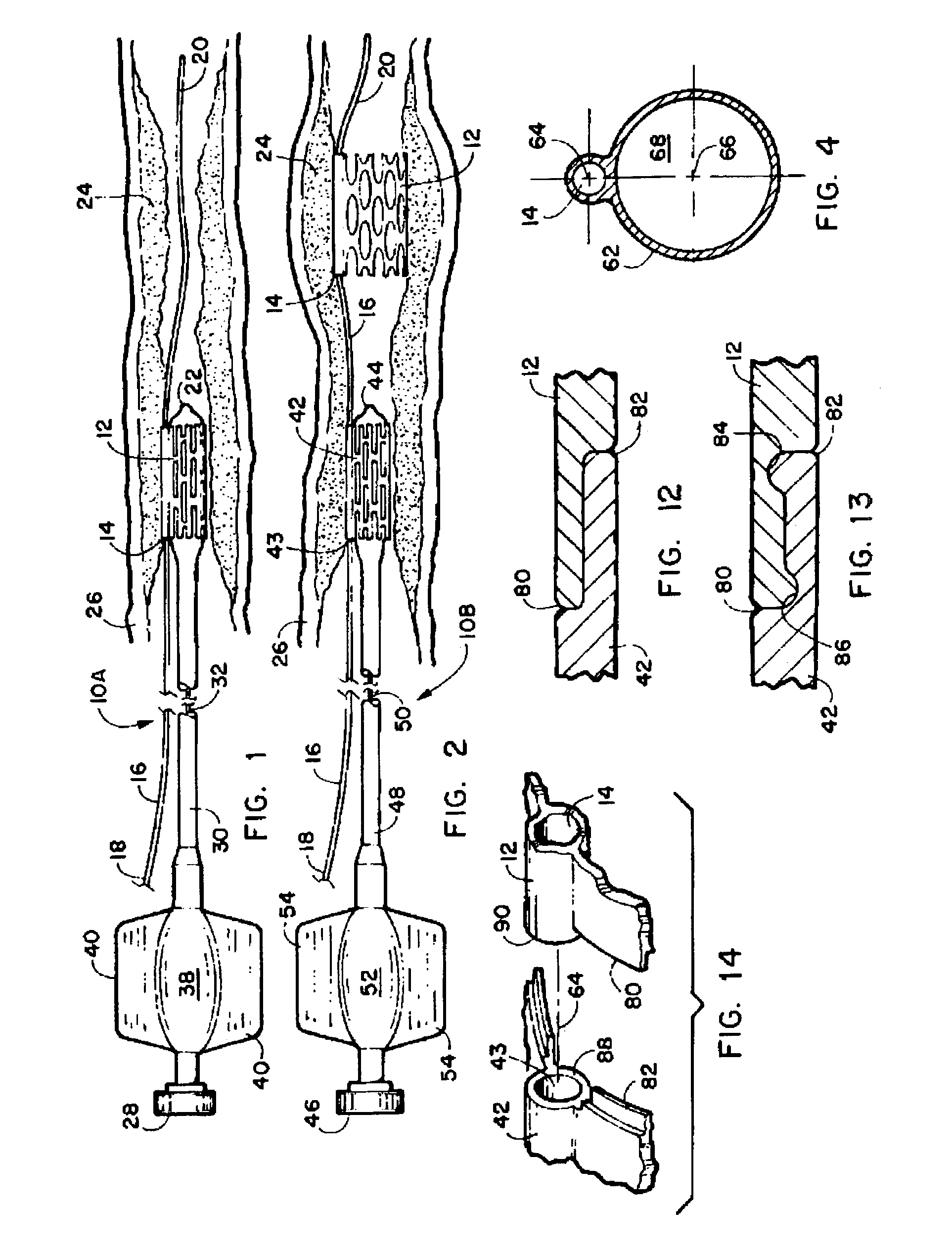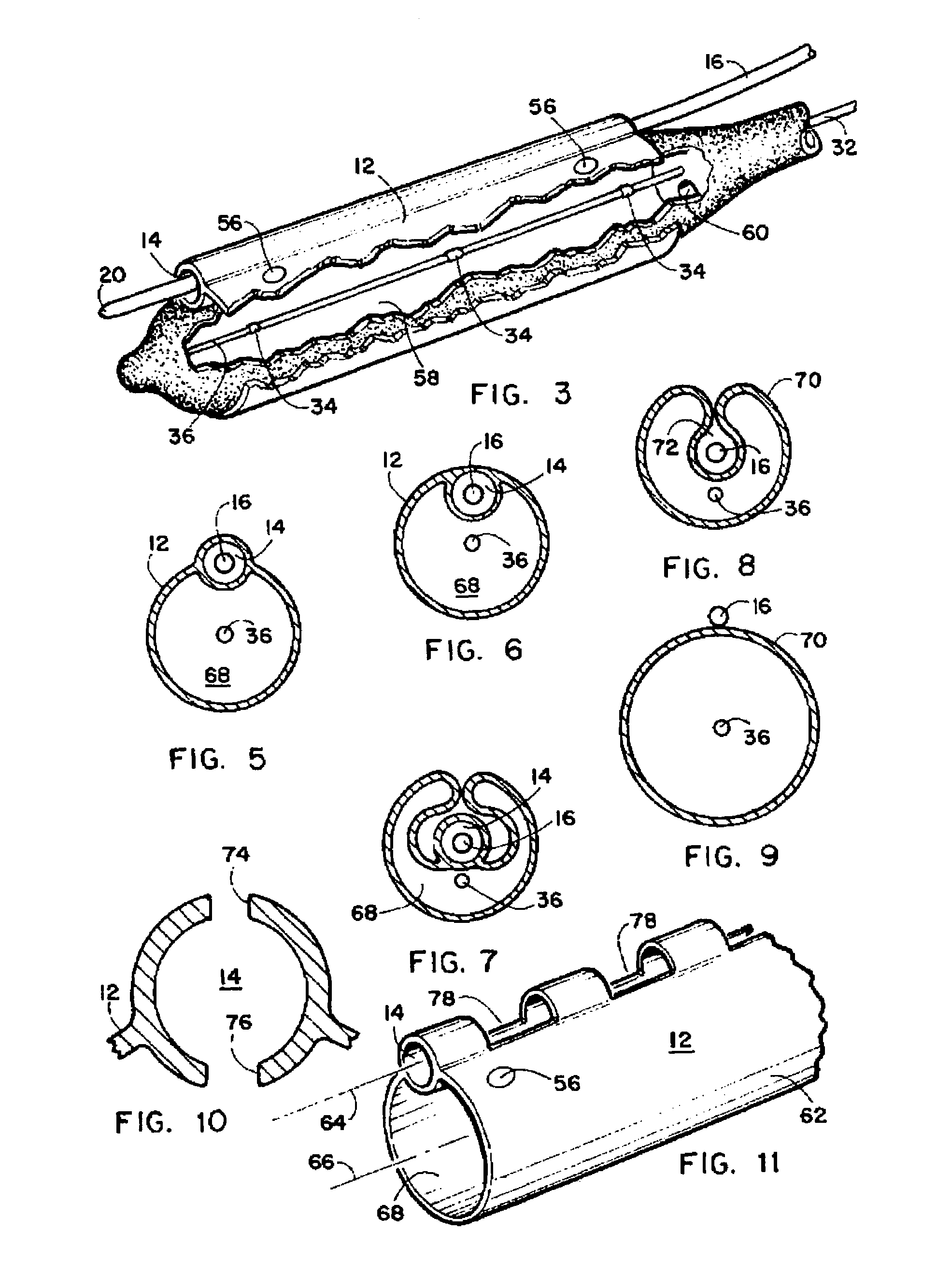Stent delivery and deployment system
a technology of stenose and stenose, which is applied in the field of angioplasty, can solve the problems of cumbersome and undesirable requirements, too long stenose, and insufficient stenose length,
- Summary
- Abstract
- Description
- Claims
- Application Information
AI Technical Summary
Benefits of technology
Problems solved by technology
Method used
Image
Examples
Embodiment Construction
[0049]Referring now to the drawings FIGS. 1-14, wherein similar parts of the invention are identified by like reference numerals, there is seen in FIG. 1 a first preferred embodiment of the stent delivery and deployment system 10A. The device depicted consists of a stent 12 with the guide wire passage 14 formed integral to or upon a wall surface of the stent 12. The guide wire passage 14 engages and translates the stent 12 over the guide wire 16 extending from outside the patients' body at the guide wire's proximal end 18, through the arterial or venal system of the patient, to the guide wire distal end 20. The stent 12 is shown operatively engaged on the balloon angioplasty catheter 22 within an elongated arterial stenosis 24 within a typical blood vessel 26 such as a coronary artery, vein, or neurovascular blood vessel of a patient. The balloon angioplasty catheter 22 as shown provides a means to laterally translate stent with the guide wire 16 engaged through the guide wire passa...
PUM
 Login to View More
Login to View More Abstract
Description
Claims
Application Information
 Login to View More
Login to View More - R&D
- Intellectual Property
- Life Sciences
- Materials
- Tech Scout
- Unparalleled Data Quality
- Higher Quality Content
- 60% Fewer Hallucinations
Browse by: Latest US Patents, China's latest patents, Technical Efficacy Thesaurus, Application Domain, Technology Topic, Popular Technical Reports.
© 2025 PatSnap. All rights reserved.Legal|Privacy policy|Modern Slavery Act Transparency Statement|Sitemap|About US| Contact US: help@patsnap.com



